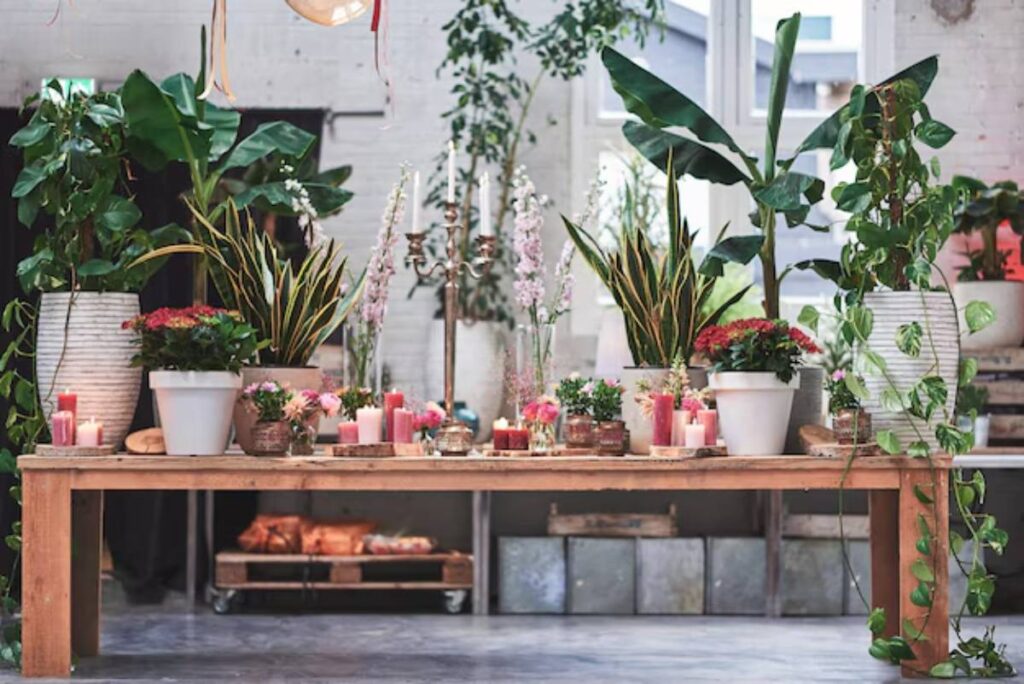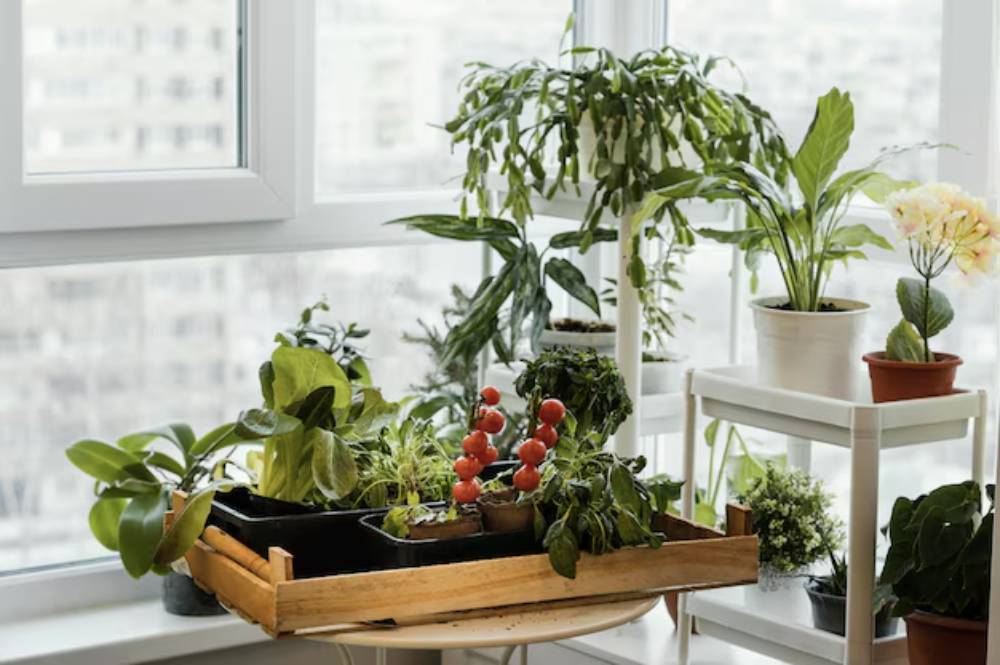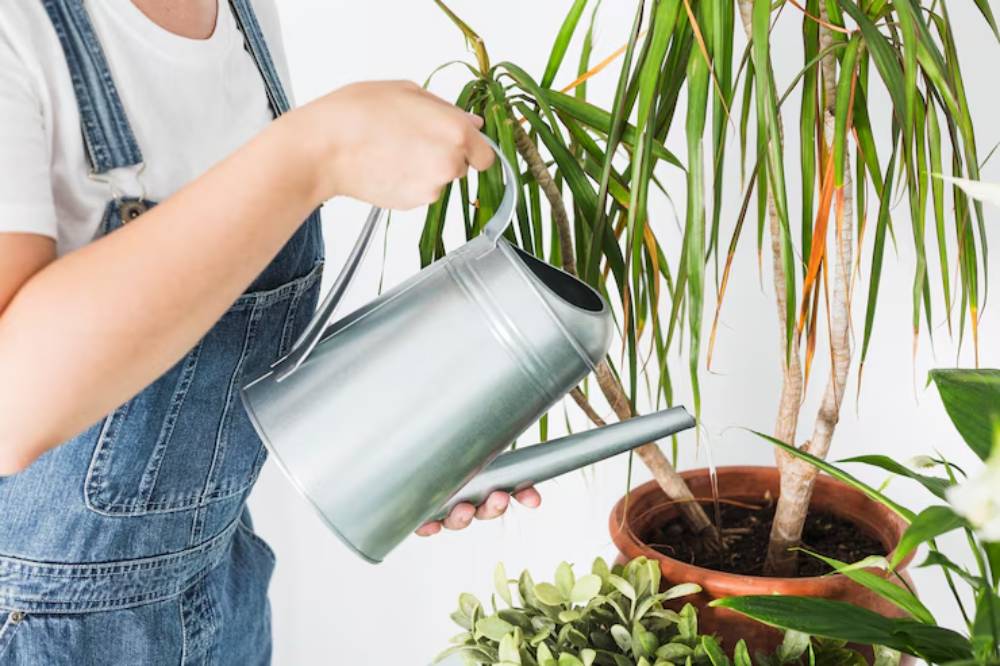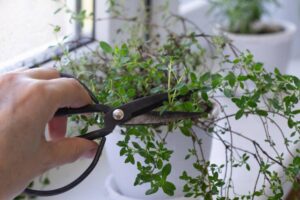The Interior Blog

How to Grow Herbs Indoors for Both Style and Function
Imagine reaching for a sprig of mint or basil right from your kitchen window — no store trips, no plastic packaging, just pure, fragrant freshness. An indoor herb garden isn’t just a convenience. It’s a way to infuse your cooking, living space, and lifestyle with function, flavour, and visual charm.
Whether you’re in a compact flat or a larger home, you can easily create a thriving and beautifully styled herb setup that offers both culinary utility and cohesive design.
Understanding the Core: Why an Indoor Herb Garden Works
Indoor herb gardens have exploded in popularity, and for good reason. They bridge the gap between form and function, combining edible greenery with elegant decor. With basic care and the right placement, herbs can thrive indoors year-round, offering daily utility while elevating your kitchen’s aesthetic.
Herbs like basil, thyme, oregano, and mint are particularly suited to indoor growing. They require moderate sunlight, well-draining soil, and regular harvesting — all achievable on a kitchen windowsill, shelf, or countertop.
Benefits at a glance:
- Fresh herbs on demand for cooking and garnishing
- Zero-waste and chemical-free harvests
- Natural air purification and humidity balancing
- Stylish accent pieces for modern or rustic kitchens
Indoor greenery also supports biophilic design, which studies show can enhance mental clarity, reduce stress, and improve indoor air quality.
Quick Guide: Starting Your Indoor Herb Garden

- Choose easy-grow herbs, basil, chives, mint, thyme, oregano
- Place near a bright window, ideally south-facing with indirect light
- Use pots with drainage holes to prevent root rot
- Select organic-rich, light potting soil
- Water when the topsoil is dry — avoid soggy roots
- Harvest regularly to encourage bushier growth
- Group herbs by water/light needs
- Style with kitchen aesthetics in mind
Step-by-Step Guide: How to Grow and Style Edible Greenery Indoors
1. Pick your herbs wisely
Begin with herbs that are hardy and beginner-friendly:
- Basil – great for pasta and salads, loves sunlight
- Mint – perfect for teas and cocktails, prefers partial shade
- Parsley – versatile, compact, and slow to bolt
- Thyme & oregano – fragrant and easy to dry for later use
- Chives – low maintenance and regrows quickly after harvest
Pro Tip: Don’t overcrowd the space. Start with 3–5 herbs based on your cooking habits.
2. Find the right light and space
Most herbs require 4–6 hours of sunlight per day. A south-facing window works best, but grow lights are a smart alternative in dim kitchens.
Important Note: Herbs grown in insufficient light often become leggy and lose flavour potency.
3. Choose stylish, functional containers
Your containers should have:
- Drainage holes and trays
- A design that matches or complements your kitchen styling
- Easy access for trimming and watering
For visual harmony, consider ceramic pots, matte planters, or terracotta for a rustic feel. For tips on decor harmony, explore how to incorporate indoor plants into a colour scheme for a palette-friendly herb display.
4. Use the right soil and water correctly

Herbs dislike soggy soil. Use a lightweight, well-draining potting mix — ideally one formulated for indoor edibles. Avoid heavy garden soil, which can suffocate roots.
Water thoroughly when the top inch feels dry, but don’t allow herbs to sit in standing water.
5. Position and group by needs
Place thirstier herbs like basil and mint together, and drier herbs like thyme and oregano elsewhere. This makes it easier to care for them efficiently.
Group plants in a way that makes harvesting intuitive — for example, line leafy herbs by your chopping board or cooking zone.
6. Harvest and prune regularly
Frequent light harvesting:
- Keeps herbs compact and bushy
- Prevents flowering (which reduces flavour)
- Encourages new growth
Pro Tip: Never cut more than one-third of a plant at once. Use sharp, clean scissors to avoid damage.
Best Practices & Additional Insights

Style your garden, not just grow it
Your herb garden should feel like part of the kitchen — not just a plant zone. Use matching or tonal pots, baskets, and floating shelves to integrate greenery seamlessly.
Get creative:
- Use a tiered stand for vertical space
- Install a wall-mounted rail with hanging planters
- Repurpose teacups or vintage tins for quirky charm
For more space-saving style ideas, learn how to build a budget indoor plant wall — ideal for compact kitchens with big ambitions.
Real-world example:
In a small city flat, placing basil, rosemary, and parsley along a sunny window with black matte ceramic pots transformed the sill into a minimalist, functional garnish station, saving fridge space and enhancing everyday meals.
FAQs
1. What are the easiest herbs to grow indoors for beginners?
Basil, mint, parsley, chives, and oregano are low-maintenance and perfect for indoor growing.
2. Can I grow herbs without a sunny window?
Yes — use full-spectrum grow lights placed 6–12 inches above your herbs for 12–14 hours daily.
3. How do I stop herbs from getting leggy?
Ensure proper lighting and prune regularly to keep them full and bushy.
4. How do I keep herbs alive in winter?
Move them closer to the warmest window, reduce watering, and consider adding a grow light.
5. Are there stylish ways to display herbs in small kitchens?
Absolutely. Use wall racks, rail systems, and matching mini planters to save space and add elegance.
Conclusion
An indoor herb garden is more than a practical cooking tool — it’s a lifestyle upgrade. From enhancing your meals to softening your space with leafy freshness, herbs bring both life and flavour into your kitchen.
By combining smart growing techniques with intentional styling, you’ll enjoy vibrant, edible greenery that feels as good as it looks.
Ready to refresh your kitchen? Start with just three potted herbs and let your indoor garden grow from there — flavour, function, and beauty all in one place.









